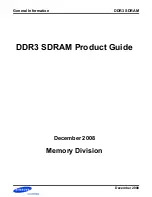
Viewing Ring-level Information
3-17
Ring Map
AC Errors
The count of frames containing errors in the ARI
(Address Recognized Indicator) or FCI (Frame Copied
Indicator) bits. Also known as ARI/FCI errors, AC errors
occur during the Ring Poll or Neighbor Notification
process when one station fails to correctly set the ARI
(address recognized) and FCI (frame copied) indicator
bits on the current AMP (active monitor present) or SMP
(standby monitor present) frame intended for it, thus
leaving its downstream neighbor without an accurate
upstream neighbor’s address. AC errors are detected
when a station receives more than one AMP frame with
ARI and FCI bits still set to 0 without seeing an
intervening SMP frame with its bits set to 1, or when the
station detects an SMP frame with its ARI and FCI bits
set to 0 without having seen an AMP frame with its ARI
and FCI bits set to 1. When a station detects an AC error,
it stops the Ring Poll process by not issuing its own SMP
frame; no other ring recovery procedures are initiated.
These errors are typically associated with hardware
(adapter) problems.
Abort Seq
The number of times that the associated station has
issued an abort sequence during transmission. These
occur when a station begins to queue data onto a token,
and subsequently detects that the token is corrupted
(because it does not have an ending delimiter after its
access control field). The station reports the error, but
does not release the corrupt token back onto the network.
This will cause the Active Monitor to purge the ring and
issue a new token. A failing network adapter is likely to
be the cause of this isolating error.
Internal Error
The count of errors caused by the station recognizing a
recoverable internal error in its adapter and removing
itself from the ring. Possible problems with the adapter
hardware include inoperable chip set, timer, or counters.
Non-Isolating Errors
Lost Frame Errors
The number of frames that the associated station has
transmitted that have not completely returned before its
Timer Return to Repeat (TRR) timer has expired (after 4.1
milliseconds). These non-isolating errors are generally
harmless, since they are often caused by a brief
disruption of ring clocking as a station enters or exits the
ring. However, they do require the Active Monitor to
purge the ring.
Congestion Errors
The number of times the associated station was unable to
copy frames addressed to it because of a lack of internal
buffering – that is, the station is receiving frames faster
than its adapter can copy information from the receive
Содержание SPECTRUM TRMMIM
Страница 1: ...Portable Management Application for the TRMMIM User s Guide The Complete Networking Solution ...
Страница 2: ......
Страница 8: ...Contents vi ...
Страница 16: ...Introduction to SPMA for the TRMMIM 1 8 TRMMIM Firmware ...
Страница 90: ...Alarm Configuration 4 10 Setting and Viewing Station Alarms ...
Страница 102: ...Statistics 5 12 Ring and Station Variables ...
















































